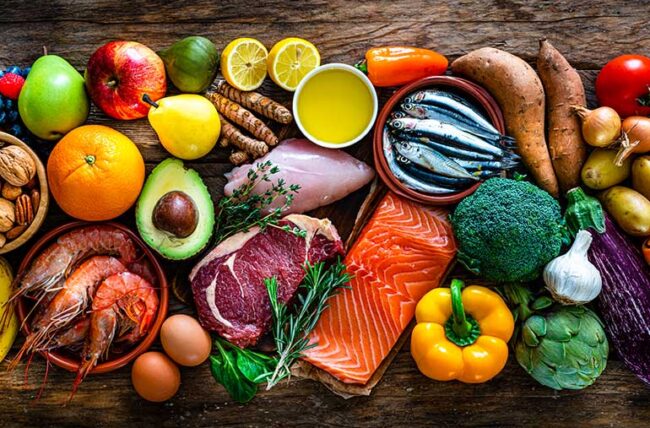A high-fat, low-carbohydrate diet known as keto has been shown in trials to aid in weight loss. Additionally, there is evidence to support its potential benefits for illnesses like diabetes, epilepsy, and Alzheimer’s disease. Your body can enter a state known as ketosis when it uses fat (or ketones, which are the by-products of the breakdown of fatty acids) for energy instead of carbs by consuming fewer carbohydrates and more fats. This article tells you the best keto diet food.
Keto Friendly Vegetables
You can eat keto-friendly vegetables as a good deal as you want non-starchy veggies, which include leafy vegetables and crunchy salad elements like cucumber, celery, and radishes. Cauliflower, cabbage, avocado, broccoli, and zucchini are other favorites. The majority of greens that can be grown above the floor may be consumed sparkling or frozen. Even a vegetarian keto weight loss plan is viable.
Cheese: Cheese is a healthy fat on keto for the ketogenic diet because it contains no carbs and is high in fat. Calcium and protein are also abundant in it. Be aware that a piece of Cheddar cheese weighing one ounce has roughly 6 grams of saturated fat, which the American Heart Association advises avoiding to reduce your risk of developing heart disease.
Eggs: Eggs are protein soruce for keto. Eggs may be an incredible keto meal because they have got roughly 6 grams of protein and less than 1 gram of carbohydrates in line with a large egg. Eggs have also been verified to launch chemical compounds that heighten emotions of satiety.
The majority of an egg’s vitamins are found within the yolk. Thus, it is crucial to devour entire eggs in preference to egg whites.
Unsweetened Plant-Based Milk
Soy, almond, and coconut milk are plant-based variants suitable for keto dieters. You ought to pick out versions without bringing sugar. Oat milk should also be avoided since it contains too many carbohydrates to be keto-friendly, even when unsweetened.
Chicken: Due to their high protein and absence of carbohydrate content, animal proteins are a mainstay of the ketogenic diet. Chicken is a simple addition that contains 29g of protein and 3g of fat per 100g, or slightly less than half a chicken breast.
Fats And Sauces: Fear not being fat. It might make you feel fuller for longer. You ought to get the bulk of your fats from foods excessive in protein, which includes meat, fowl, fish, and eggs. But you could also add salad dressings, cook dinner with olive oil, and pinnacle your greens with cheese.
Nuts And Seeds: Low-carb nuts and seeds are widely available. Just be mindful of two things. Don’t eat too much, first! Start with a small amount and work up to 1/4 cup (approximately 25 grams) as a snack. For example, cashews have a notably better carbohydrate content material than pecans or macadamia nuts.
Salmon: Omega-3, which is abundant in salmon and other fatty fish like sardines, mackerel, and anchovies, has been found to help reduce insulin levels and increase insulin sensitivity in overweight people. Salmon is the ideal fish for a keto diet because 100g of it, or around 1 salmon fillet, has 0g of carbohydrates and 26g of protein, and 11.8g of fat.
Olive Oil: Olive oil is 99.9% fat; more specifically, it contains a lot of oleic acid, a monounsaturated fat that has been linked to a healthier heart and a lower chance of developing heart disease. Olive oil is a simple, regular addition to food for ketosis since it is simple to sprinkle over meals, use in keto-style salad dressings, and incorporate into mayonnaise. Use extra virgin olive oil whenever possible because it naturally contains a lot of monounsaturated fatty acids and antioxidants.
Fish And Seafood: Fish is a protein-wealthy, carb-free food this is high in B nutrients, potassium, and selenium. According to a review from 2022 that was published in Prostaglandins, Leukotrienes, and Essential Fatty Acids, salmon, sardines, mackerel, albacore tuna, and other fatty fish have high levels of omega-3 fats, which have been found to improve hemoglobin A1c levels, a test that measures your blood sugar levels over the course of three months.
Conclusion
Keep in mind that the purpose of a ketogenic diet is to lower carbohydrate intake in order to promote ketosis drastically. Consuming foods heavy in carbs, such as grains, starchy vegetables, sugary foods, and the majority of fruits on the keto diet, should be avoided or minimized. Maintaining your ideal carbohydrate range can be made easier by ketogenic diet nutrition labels and keeping track of your macronutrient intake.



